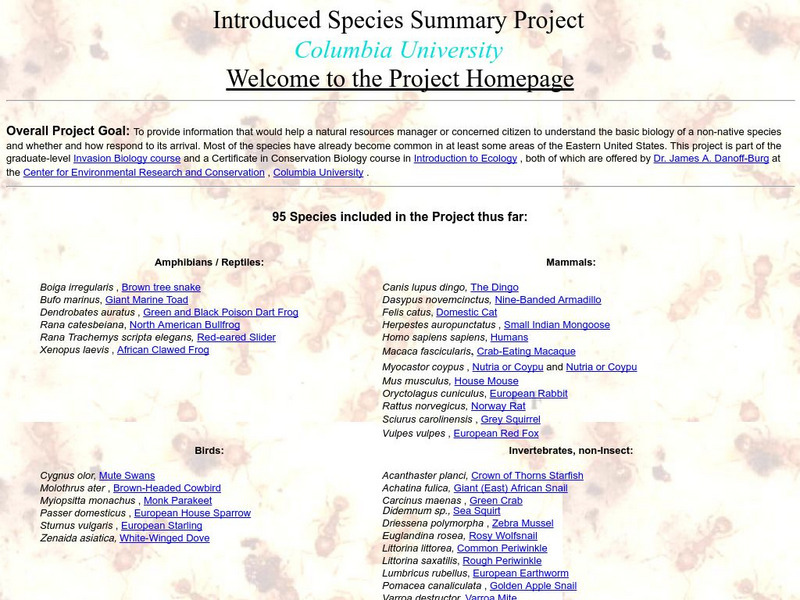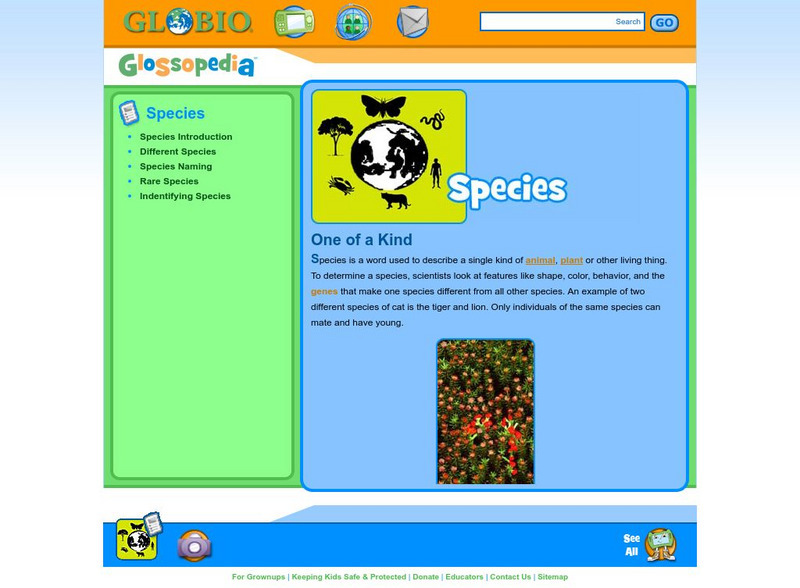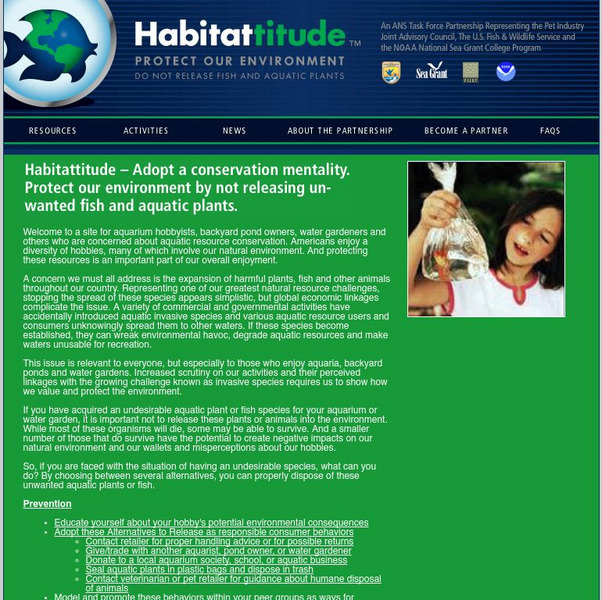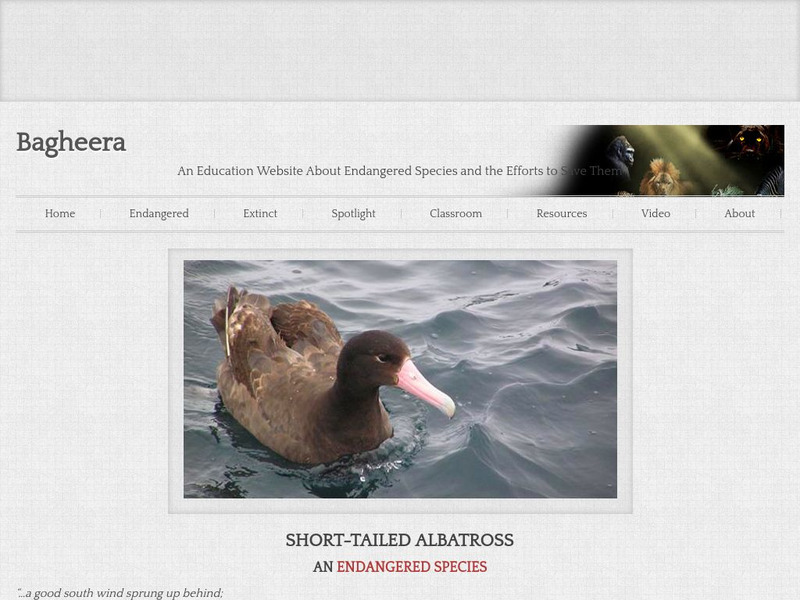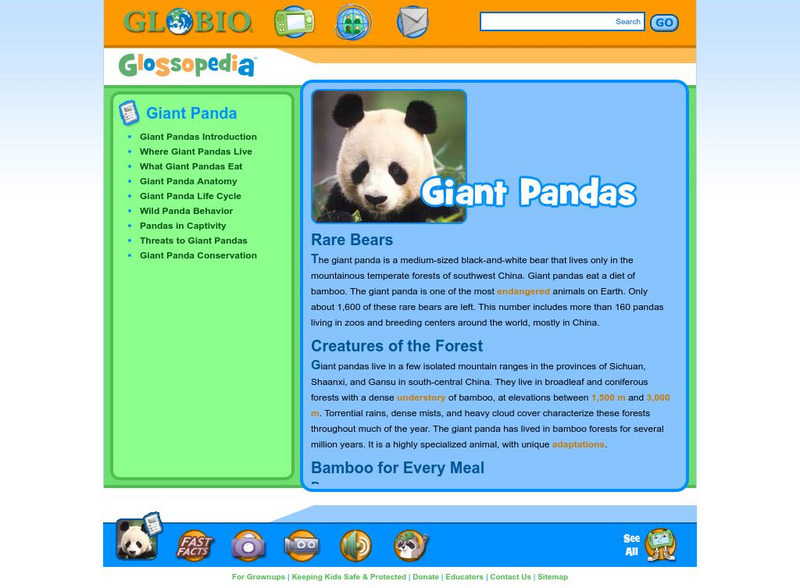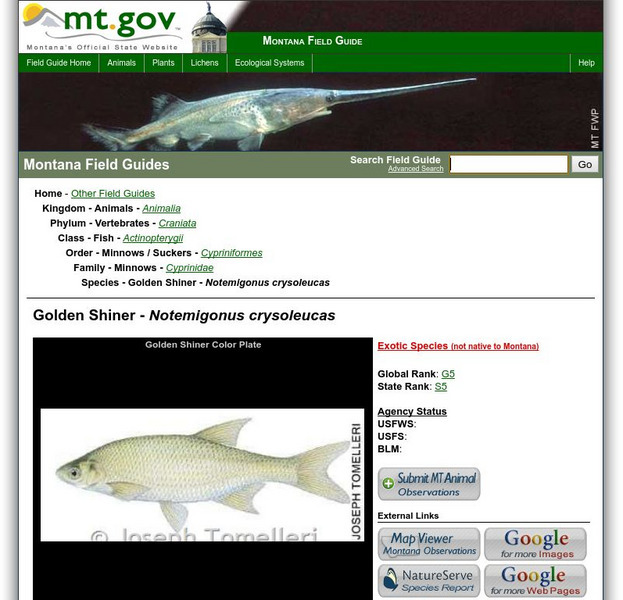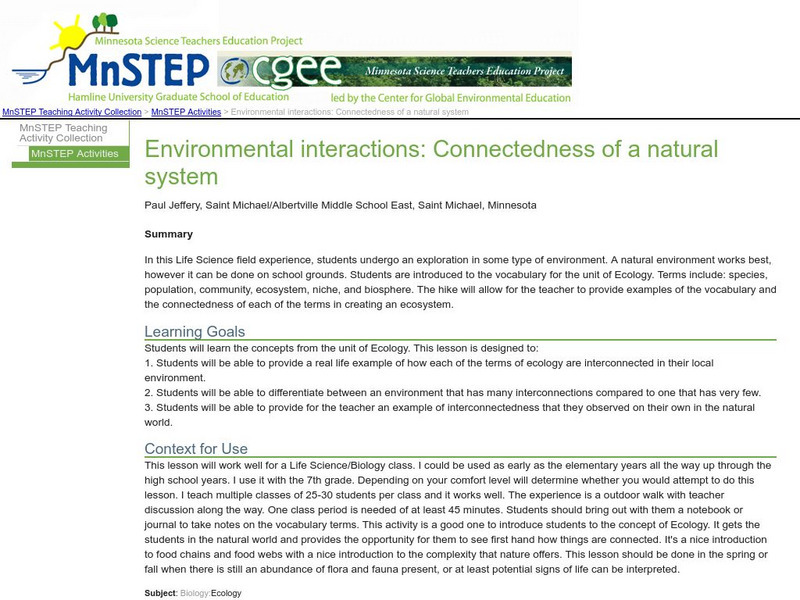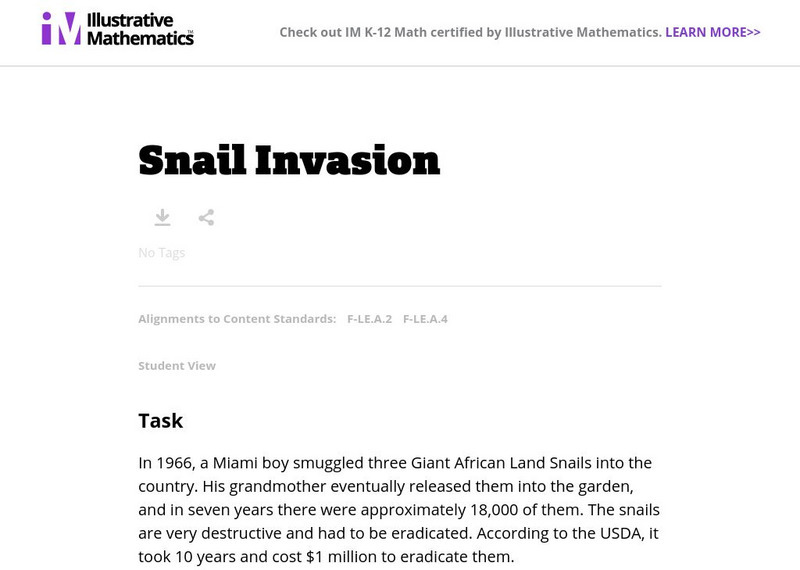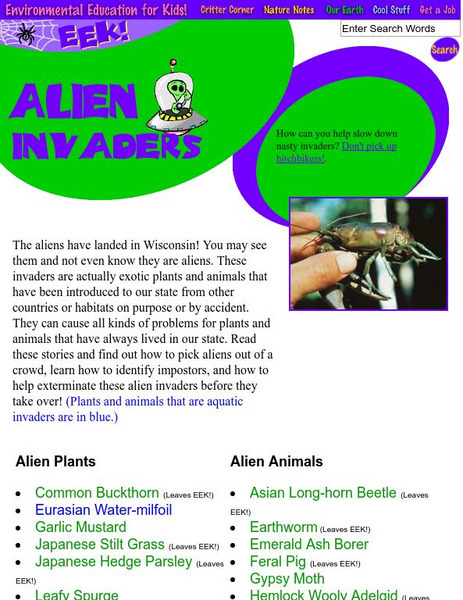Hi, what do you want to do?
Curated OER
Welcome to Populations!
Students define what population is in their own words. For this biology lesson, students explain different ways to measure population density. They interpret population graphs.
Curated OER
Superbugs: An Evolving Concern
Students investigate the growth of bacteria in the presence of antibiotics. They write a hypothesis, conduct an experiment to test their hypothesis, analyze the results of their bacterial growth experiment, and describe the results on a...
Curated OER
Extracting DNA
Students explore DNA, genes, chromosomes and the chemicals that make up DNA. They research Internet resources to develop their knowledge of DNA. They conduct an experiment to separate DNA from peas and create a poster that they can use...
University of Florida
Florida Museum: South Florida Aquatic Environments: Introduced Species
The transport of living plants and animals to areas beyond their native range has been practiced by human beings for thousands of years. While some introductions are intentional, others occur by accident or happenstance. Regardless of...
Columbia University
Columbia University: Introduced Species Summary Project
The purpose of this website is to provide information that would help a natural resources manager or concerned citizen to understand the basic biology of a non-native species and whether and how to respond to its arrival. Most of the...
PBS
Pbs Nova: Deep Sea Invasion: Battling Introduced Wildlife
Many species that have been introduced for the purpose of dealing with a problem such as erosion or a rat epidemic, instead become invasive. How can these invasive species be eradicated? Eminent ecologist Dan Simberloff explains some of...
Globio
Glossopedia: Species
A species is defined as a single kind of animal, plant or creature. Examples of different species are given and how the many species that exist relate to biodiversity. Scientific naming conventions are introduced.
Read Works
Read Works: The Origin of Species
[Free Registration/Login Required] An informational text about problems created when nonnative species become invasive. A question sheet is available to help students build skills in reading comprehension.
Smithsonian Institution
National Museum of Natural History: Ocean Planet: Biological Roulette: Alien Species
Click on the roulette wheel and see how some alien species were introduced into the United States and the effect they have had on our country. This is part of an archived Smithsonian exhibit.
Other
Aquatic Nuisance Species Task Force: Habitattitude
Dedicated to aquatic resource conservation, this task force addresses the expansion of harmful plants, fish, and other animals and invasive species
Ducksters
Ducksters: Endangered Animals for Kids: How They Become Extinct
How do endangered species and animals become extinct? Hunting, pollution, loss of habitat, and introduced species all play a part and are discussed on this site.
Bagheera
Bagheera: Short Tailed Albatross
This site highlights the short-tailed albatross as a vanishing species. Content includes a focus on its habitat, history, causes of endangerment, and current conservation actions designed to help save it from extinction.
Environmental Education for Kids
Eek!: Teacher Resources: Identifying Alien Invaders
In this lesson, students will identify native and exotic plant and animal species through observation and research, and identify the effects of introduced species on ecosystems.
TED Talks
Ted: Ted Ed: Attack of the Killer Algae
As benign as it may look up close, the tiny seaweed Caulerpa taxifolia can wreak quite a bit of havoc on coastal ecosystems. This super algae is very adaptable; it also grows fast and spreads easily. Eric Noel Munoz gives the details of...
PBS
Pbs: Nature: Hawaii's Vulnerable Biodiversity
Because of Hawaii's isolation, endemic species evolved in their own unique way. With the arrival of foreigners and colonization, new species were introduced to the islands. The result being a crisis within the Hawaiian ecosystem,...
Globio
Glossopedia: Giant Panda
Giant Pandas only live in the mountains of southwest China. This article focuses on Giant Panda habitat, diet, life cycle and reproduction. Extensive information is given on panda babies and the contrast between life in the wild and life...
Scholastic
Scholastic: Learning the Causes of Extinction
There are five major causes of extinction: habitat loss, an introduced species, pollution, population growth, and overconsumption. Through this activity, students will create a list of reasons why animals can become extinct.
California State University
Cardboard Tree and Endangered Animals Lesson
Two short art lessons in one that introduce young learners to the idea of extinct animals and habitats. Each student will be creating and painting a habitat and assembling an owl. This could be adaptable to use the extinct animal of your...
Other
Nsw Dept. Of Ed.: "One World" [Pdf]
Reading unit plan about endangered animals from the New South Wales, Australia, Department of Education and Training entitled "One World" (Forty-four page PDF file). It contains ten days worth of teaching suggestions that use a variety...
Other
Montana Field Guide: Golden Shiner Notemigonus Crysoleucas
Information from a state where the Golden Shiner minnow is non-native, but has introduced into the wild.
Science Education Resource Center at Carleton College
Serc: Environmental Interactions: Connectedness of a Natural System
A field experience where students undergo an exploration in a natural environment. They are introduced to the concepts of species, population, community, ecosystem, niche, and biosphere.
Science Education Resource Center at Carleton College
Serc: Principles, Structure, & Implementation of International Environmental Law
This module introduces the fundamental norms and institutions that comprise international environmental law and then focuses on six specific topics: air pollution and protection of the atmosphere, hazardous waste, endangered species,...
Illustrative Mathematics
Illustrative Mathematics: F Le Snail Invasion
In this task, students investigate the power of exponential growth in this real-world example of an invasive species that was introduced to Florida in 1966, a giant snail. Aligns with F-LE.A.2 and F-LE.A.4.
Environmental Education for Kids
Eek!: Alien Invaders
The aliens have landed in Wisconsin! You may see them and not even know they are aliens. These invaders are actually exotic plants and animals that have been introduced to our state from other countries or habitats on purpose or by...









